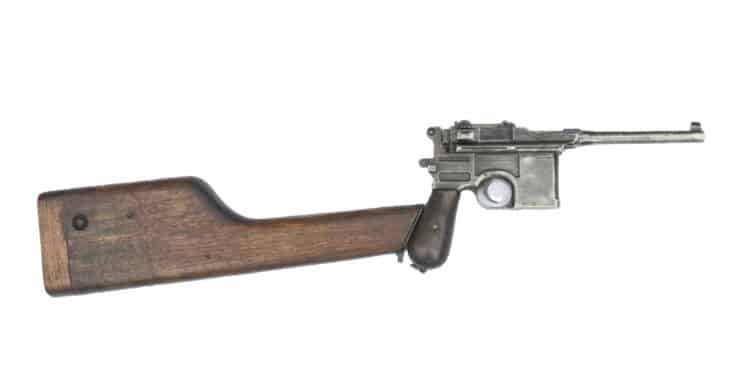In 1893, Paul Mauser tasked the three brothers, Fidel, Fritz, and Josef Federle, with designing a semi-auto pistol for the military. The gun was patented in 1895 and went into production in 1896. With a design that’s far ahead of its time, the Mauser firm had made the ultimate personal defense weapon. This is a modern concept usually represented by stockless, short-barreled, semi-automatic rifle-caliber firearms that are, really, too big to be called pistols and too small to be labeled carbines. Rifle caliber pistols are not the easiest things to shoot accurately and they’re prone to muzzle blast that can cause permanent hearing loss in the operator. They are neither fish nor fowl and not particularly effective.
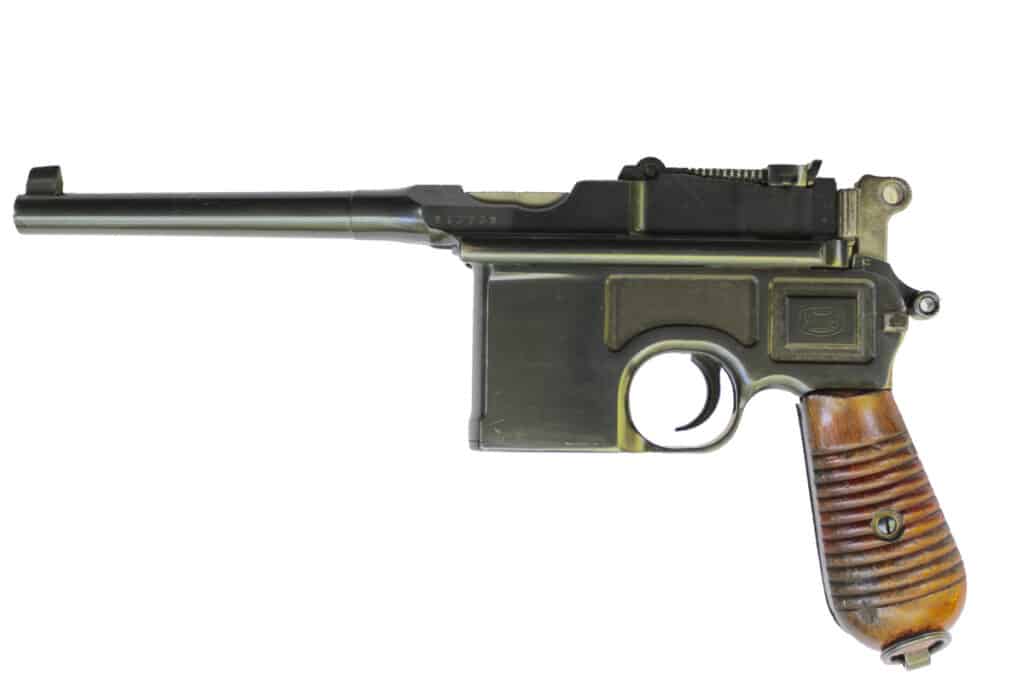
The most successful way to bridge the gap between pistol and carbine is the shoulder-stocked pistol, and Mauser lit the path, presaging the development of the sub-guns genre which saw the development of the legendary M3 Grease Gun, the BSA Sten, the HK MP5, and many others. Although the concept of a personal defense weapon went unnamed at the dawn of the 20th Century, its value was recognized, and the new Mauser pistol became a worldwide best seller. Like Mauser rifles, it loaded from a stripper clip and the bolt could also be held open by an empty stripper clip, allowing the cartridges to be loaded individually by hand.
The ability to hit targets easily with a reliable weapon was the virtue that sold most people on the new pistol. Despite appearing clumsy in the hand, the pistol is easy to handle. Since most folks aren’t dedicated pistol shooters, having a pistol that makes up for some of their lack of expertise is a blessing. Firing with the C96 one-handed easily produces a ¾-inch group at 25 yards. A lot of revolvers won’t even do that from a Ransom Rest fixture. Due to its forward position of the magazine, those who want to use a two-handed grip should put the second hand around the front of the magazine. This gun is shaped differently than other guns and that becomes an advantage for precision shooting.
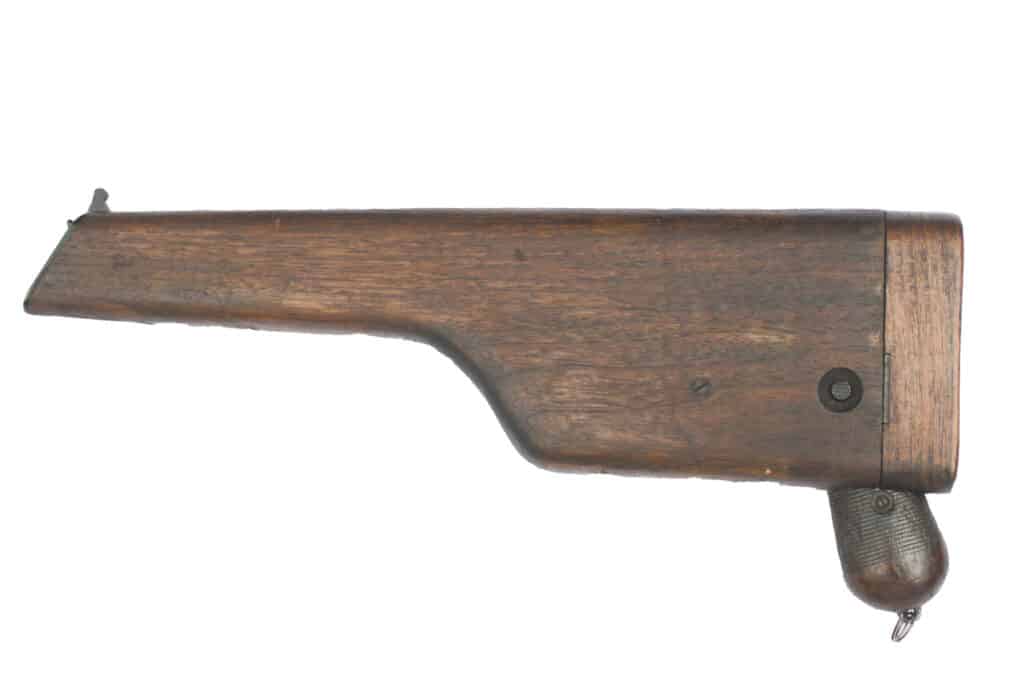
The pistol also came with a shoulder stock that doubled as a holster. Most small, light, guns are hard to hit with. Not this one. In addition to being about the smallest and lightest gun practical, the stocked Mauser Military Pistol locks-in solidly for accurate firing. Put your second hand around the front of the magazine well and it becomes rock steady. Hits at ong-range (200 meters and beyond) are easily attained. Exactly why this gun is so easy to shoot (both with and without its holster stock) is a mystery. Everyone has a pat answer, but none of them hold up under intense scrutiny. It just is.
Due to its compact size, you could effectively use the stocked Mauser pistol with one hand while still holding the reins of a galloping horse with the other. Of course, steadiness on a galloping horse is relative, but some cavalrymen of the day used it that way while others used it just as a pistol. The ability to go back and forth between being a pistol and a compact carbine sets the stocked Mauser Military Pistol ahead of the “modern” PDWs that are too big to fill the role of a pistol.
The stocked Mauser Military Pistol was very compact. Fitted with a holster harness, it was often worn on the belt and, sometimes, a sling was used. The rig also fits nicely in a briefcase. Without the stock, you have a very thin pistol that lends itself to concealment. In one instance between WWI and WWII, when it was common for Europeans to carry pistols, a group of men sharing a train compartment decided to compare pistols to help pass the time. The first three produced various .25 automatics but the fourth pulled out a full-size Mauser Military Pistol. There was a surprised silence as they beheld this comparative behemoth then one of the men said, “you’re in the military, aren’t you?” The fourth man smiled and nodded as he holstered his Mauser pistol.
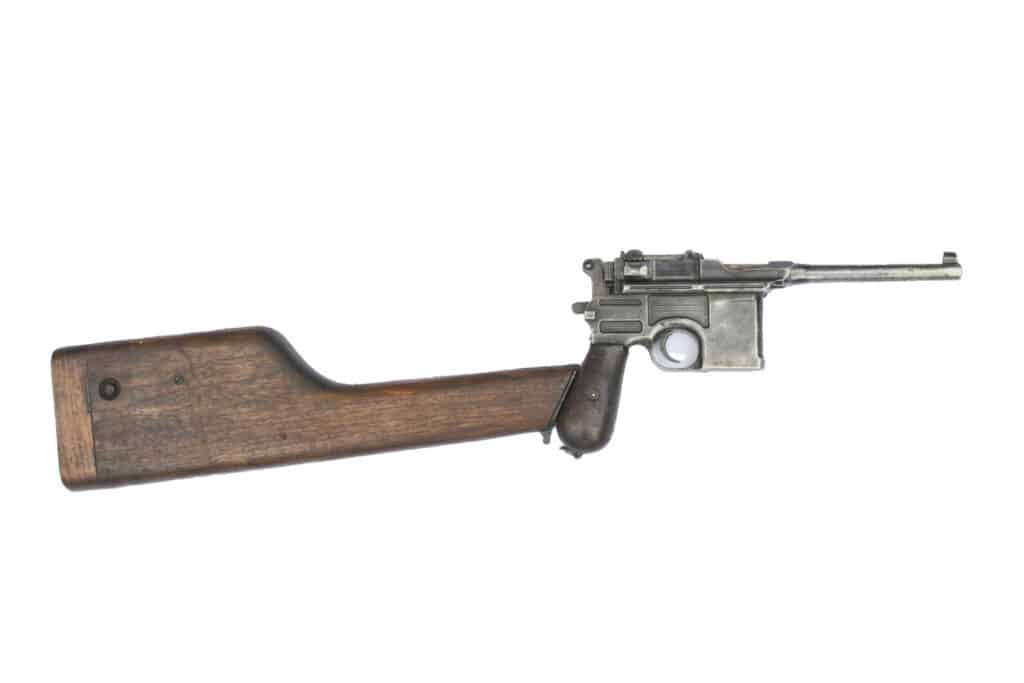
Easy handling and concealability weren’t the new automatic pistol’s only virtues. In all its long history, no one has ever been able to fault its reliability under the worst combat conditions. When you drew this pistol, you could be sure that it would work. Screws are often a source of trouble in pistols as they loosen and back out. The only screw in this pistol is the one holding the grips on. Power was another virtue. The pistol was originally chambered for the flat-shooting .30 Mauser cartridge which launched an 86-grain bullet at 1410 FPS, easily penetrating 11 standard 7/8-inch boards and equaling the penetration of a .357 magnum armor piercing round. Penetration on the battlefield (where the enemy is constantly trying to hide behind cover) is paramount. Due to the light bullet weight, there was very little recoil, and this came to the forefront between the wars when the select-fire Mauser Military Pistol Model 711 came out. Despite a very high cyclic rate, the pistol was controllable in full-auto, so long as the holster stock was attached. If a close-range emergency dictated full-auto fire without the stock, you would turn the pistol on its right side and let it arc to the right without climbing. In WWII, German dispatch riders often carried this pistol, as did some members of the Nazi SS.
While less common than the original .30 Mauser chambering, the pistol was also made in the powerful 9mm Mauser. It fired a 128-grain bullet at 1362 FPS. In China, they made a copy in .45 ACP.
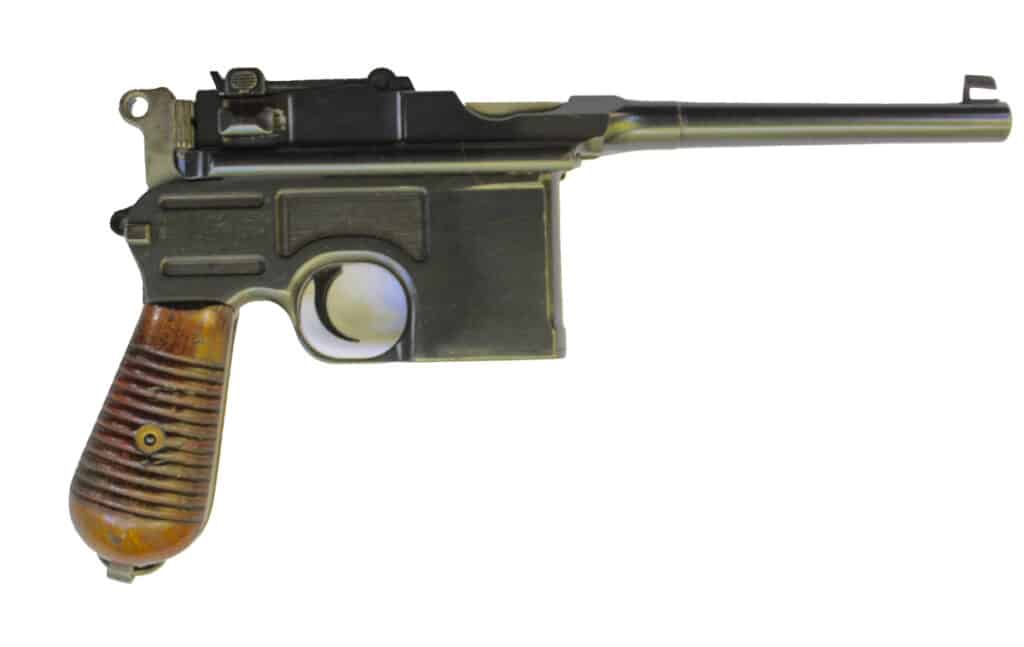
For those wanting the most compact survival rifle practical, the stocked Mauser Military Pistol has no competitors. Certainly not the current Air Force “survival” rifles”. These skeletonized abominations are glorified zip guns and the hardest things to shoot accurately that I have ever encountered. Not to mention, they also lack the power to deal with large game or to stop a determined attack by man or beast.
THE STORY OF TWO PISTOLS
There are two different Mauser Military Pistols shown in the photos. The near mint example was brought back as a war trophy by an officer in the 24th Infantry Division in the Philippine Campaign of WWII which saw some of the hardest and most intense fighting of the war. He was issued a M1911A1 pistol and an M1 carbine, but used the pistol for most of the fighting, and using the carbine only for long range shots. He had grown up using his father’s pistols killing snakes and was quite adept with them. Whether the Japanese who had originally owned this Mauser Pistol had gotten it as a private purchase pistol, which was common, or had taken it as a war trophy in China is unknown.
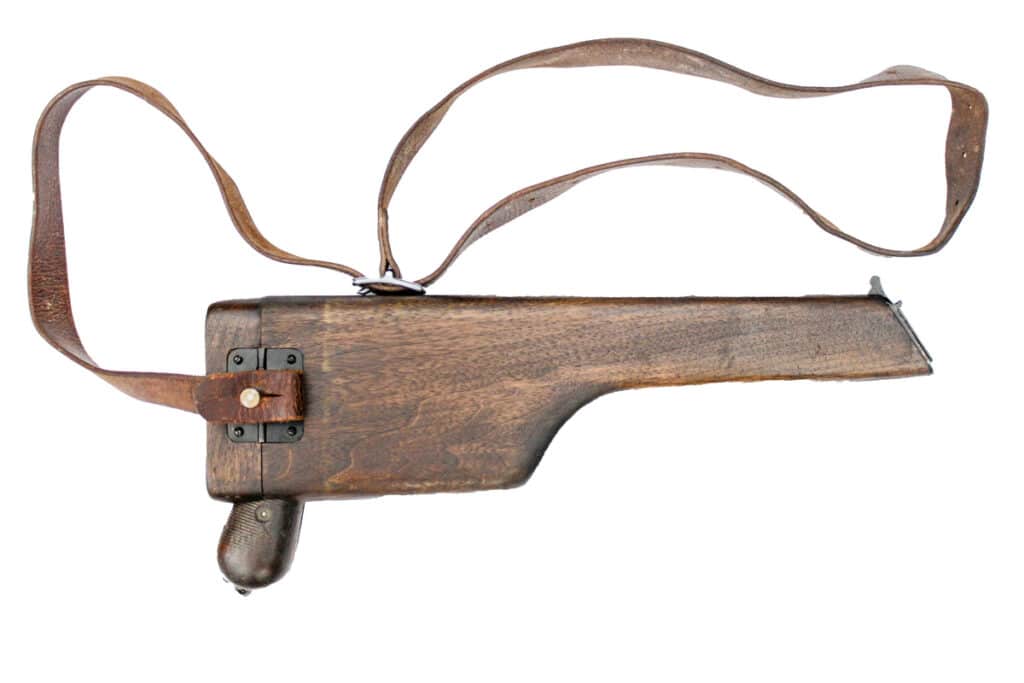
The second pistol in the photos is a stocked Mauser Military Pistol that was loaned to me by Hunter’s Lodge in Ethridge, Tennessee. They have a number of them in inventory. This one is a well-worn WWI 9mm version but without the red “9” on the grips that these models are known for. It functioned flawlessly and despite the well-worn barrel, it still shot accurately. The holster stock was a bit longer than normal, which suited me as I take a 15 9/16-inch length of pull if a stock is being made to fit me. One of the photos shows the now rare stock sling for this gun.
TIPS FOR USERS
The Mauser Military Pistol has a heavy metal bolt stop to prevent the slide from coming out of the gun. It’s a good idea to check this part for cracks and replace it if need be.
If you want to be sure that the locking lugs are working properly, there is a simple test for that. Knowing that the barrel must recoil slightly to initiate the unlocking process, hold the pistol by the barrel and try to pull the bolt back. If the locking lugs won’t let it move, the test is passed.
This pistol is very fast and easy to take apart and put back together, but one thing that none of the manuals tell you is that these guns usually need a sharp tap from a block of wood to snap together in the last assembly step. Just make sure that the lug on the right side is aligned with the notch on the frame.
The number of pristine condition Mauser Military Pistols is small, and their collector value is high. Do not despair, though, if all you can get is a worn out, beat up one. Eugene Golubstov at Lugerman.com is one of the few total restoration gunsmiths in the world. He can take any junk Mauser pistol and refurbish it, inside and out, so that it’s indistinguishable from one that has just left the Mauser Factory 100 years ago. He can also do major and minor repairs and re-barreling on these guns.
CONCLUSION
It is a testimony to the genius that went into this pistol that, today, 128 years since it first came out, there is still no other weapon that precisely fills the niche of the Mauser Military Pistol.



